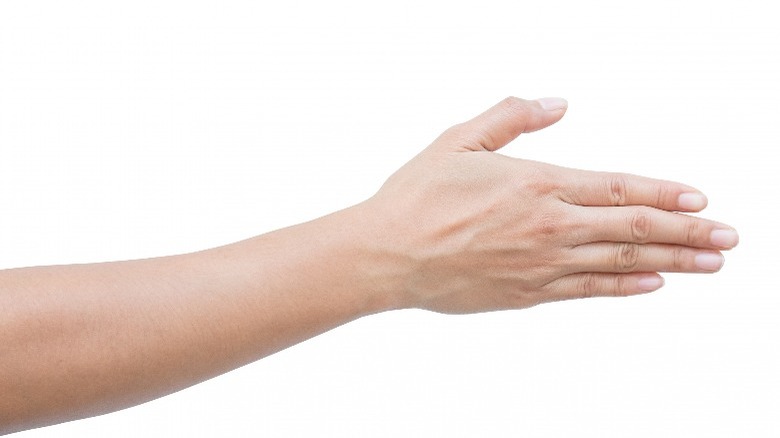The Genius Trick For Seeing How Much Daylight You Have Left On Your Hike
Knowing that your phone is on its last bar of battery can be stressful at the best of times. However, out on a hike, it could also pose a serious risk to your safety — from getting lost in the wilds or losing contact with loved ones to keeping track of the time. Luckily, in the case of the latter, there is at least an easy way to judge how much daylight is left — just by using your hands.
Travelers have utilized this simple technique since time immemorial. While it's only ever going to be a rough estimate, it could help you decide whether to press on to your destination or set up camp for the night instead. So, when the sun is lowering in the sky, make like our ancestors and follow these easy steps...
First, hold your hand up to the sun, palm outstretched horizontally, fingers together. Next, position your hand so your index finger is directly beneath the sun. While ignoring your thumb, count the number of finger widths between the sun and the horizon. In short, each is the equivalent of around 15 minutes — so, if you can place two hands in the gap, there are about two hours left until sunset.
Other safety tips to bear in mind
One important thing to mention here: avoid looking at the sun directly, as this could cause severe damage to your eyes. Instead, look just below the sun to where your hand is positioned. Wearing sunglasses is always a good idea, too, as this can help protect your eyes from UV rays and reduce glare.
In addition, remember that this nifty technique, while effective for a rough approximation, is only ever going to be just that — an approximation. Furthermore, it will only work if it's a sunny day — and the closer you are to the poles, the less effective it will be. Also, if you are camping, don't forget to factor in the time needed for setting up camp and securing your tent. If it's your first time or you're using a new tent, doing a practice run beforehand is advisable.
Finally, it's always best to be prepared for any long-distance hike. Therefore, taking a watch, a compass, and a good old-fashioned map so you're never solely reliant on electronic devices is a good start. But if, for whatever reason, you do have to fend for yourself — or want to connect more with nature by using the methods of our forebears — this simple little hack is a great option. Plus, this bonus point is a sure way to impress your friends.

